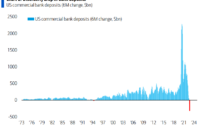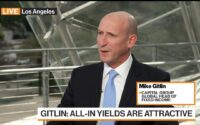NY Fed report finds Americans increasingly facing borrowing headwinds
[1/2]An American Express and a Visa credit cards are seen on a computer keyboard in this picture illustration taken September 6, 2017. REUTERS/Philippe Wojazer/Illustration
July 17 (Reuters) – Americans are increasingly getting shot down when they seek out loans, new data from the New York Fed, released Monday, said.
The bank reported that in June, across a number of fronts, credit was the hardest to get in years, with fewer people seeking out loans, at least for now. The report’s findings were compiled as part of the New York Fed’s monthly Survey of Consumer Expectations, with respondents polled every four months about credit access issues.
The bank said that the overall rejection rate for credit applicants rose to its highest level since June 2018, and stood at 21.8%, from 17.3% in February. The bank noted the rise in the rejection rate “was broad-based across age groups and highest among those with credit scores below 680.”
The survey also found that rejection rates for auto loans hit the highest level for a data series that goes back to 2013 and stood at 14.2%, from 9.1% in February. Rejection rates for credit cards, credit limit increases also gained ground. The rejection rate for mortgages stood at 13.2% in June from 10% in February, while the rejection rate for mortgage refinancing jumped to 20.8% last month, from 16.3% in the prior survey.
The survey found that what it called the average probability that a loan will be rejected “sharply” surged to record levels for auto loans, credit cards, credit limit increases and housing related credit.
The survey found a modest pullback in those seeking loans, to 40.3% of respondents in June—that’s the lowest level since October 2020–from February’s 40.9%. But it noted that respondents who plan to apply for credit over the next year ticked up a touch to 26.4% of respondents, from February’s 26.1%.
The New York Fed data arrives amid a sea change for U.S. lending, as the Fed has pumped up its short-term target interest rate very aggressively since the spring of 2022, as it has sought to cool high levels of inflation. The Fed wants to temper demand and a key part of that process has been to make credit harder to get, and it is widely expected to raise rates again next week.
The housing sector has been particularly hard hit by rising rates as mortgage costs have surged from sub 3% levels in the fall of 2020 through most of the following year, to mortgages that are now hovering around the 7% mark.
The surge in home lending costs has caused Americans to cut back on borrowing there: The New York Fed reported in May that during the first quarter demand for mortgages fell even as overall household debt levels ticked higher.
Meanwhile, bank lending to consumers has remained relatively stable although it is also showing some signs of slowing down.
Reporting by Michael S. Derby; Editing by Aurora Ellis
Our Standards: The Thomson Reuters Trust Principles.
[ad_2]
Source link


